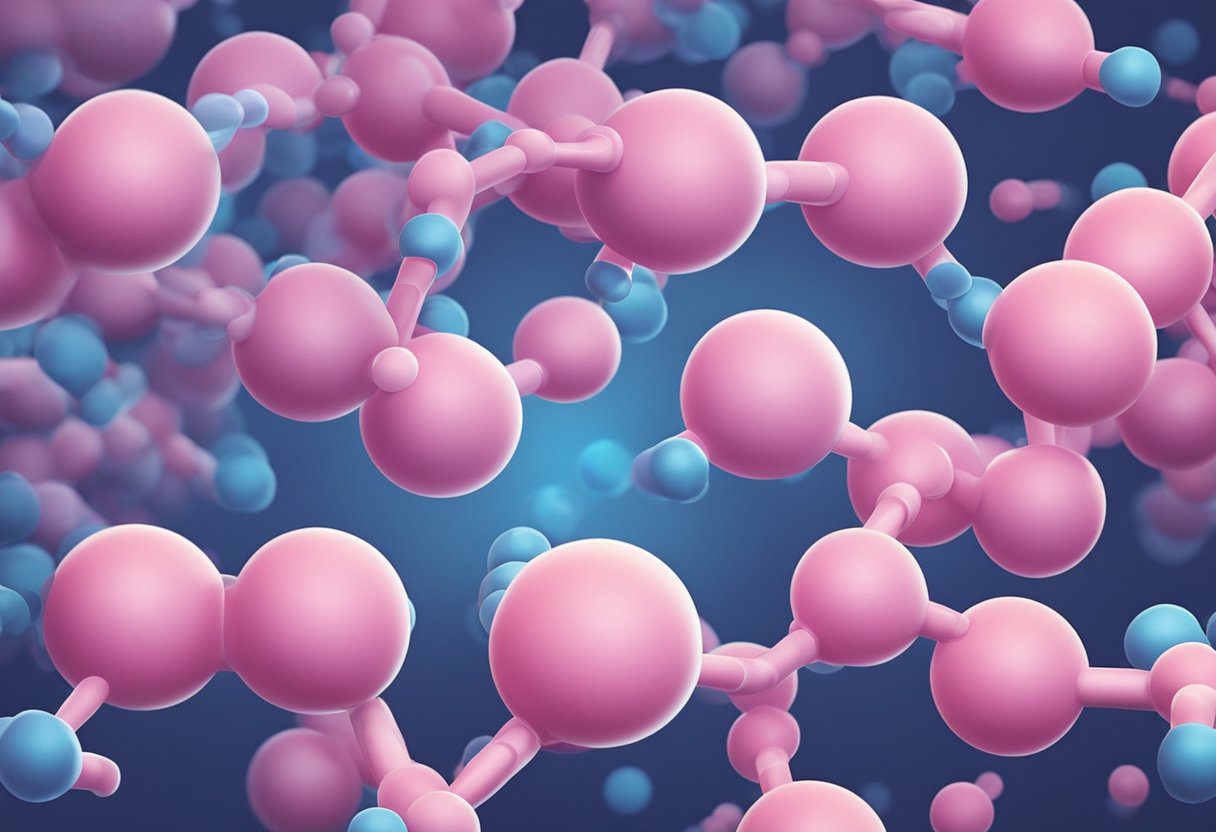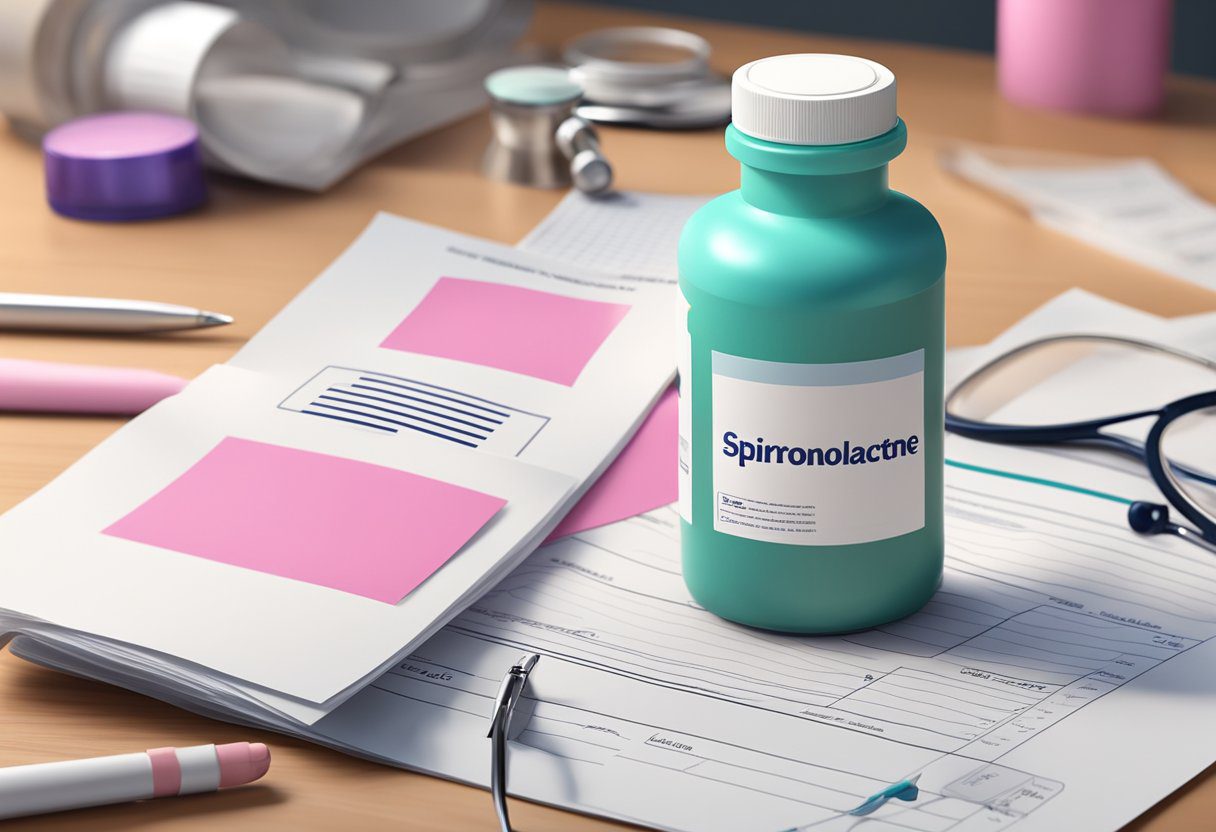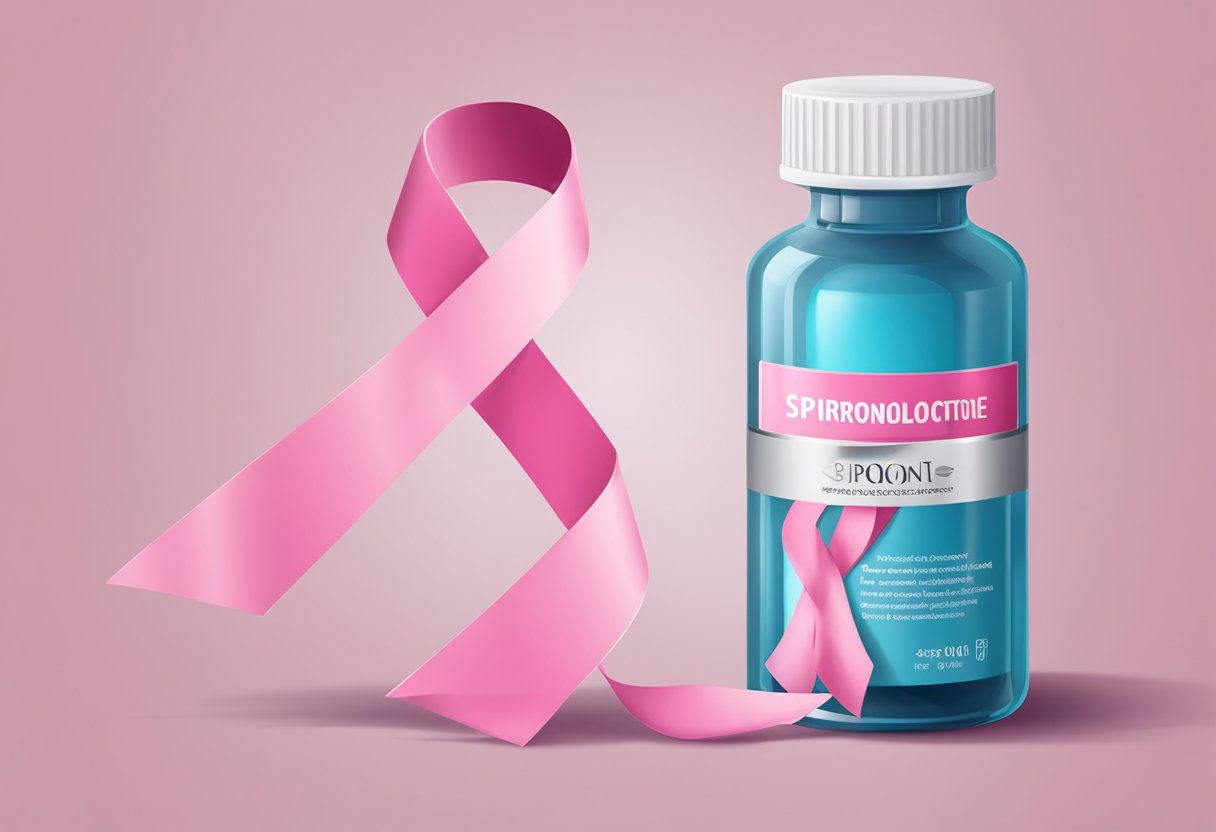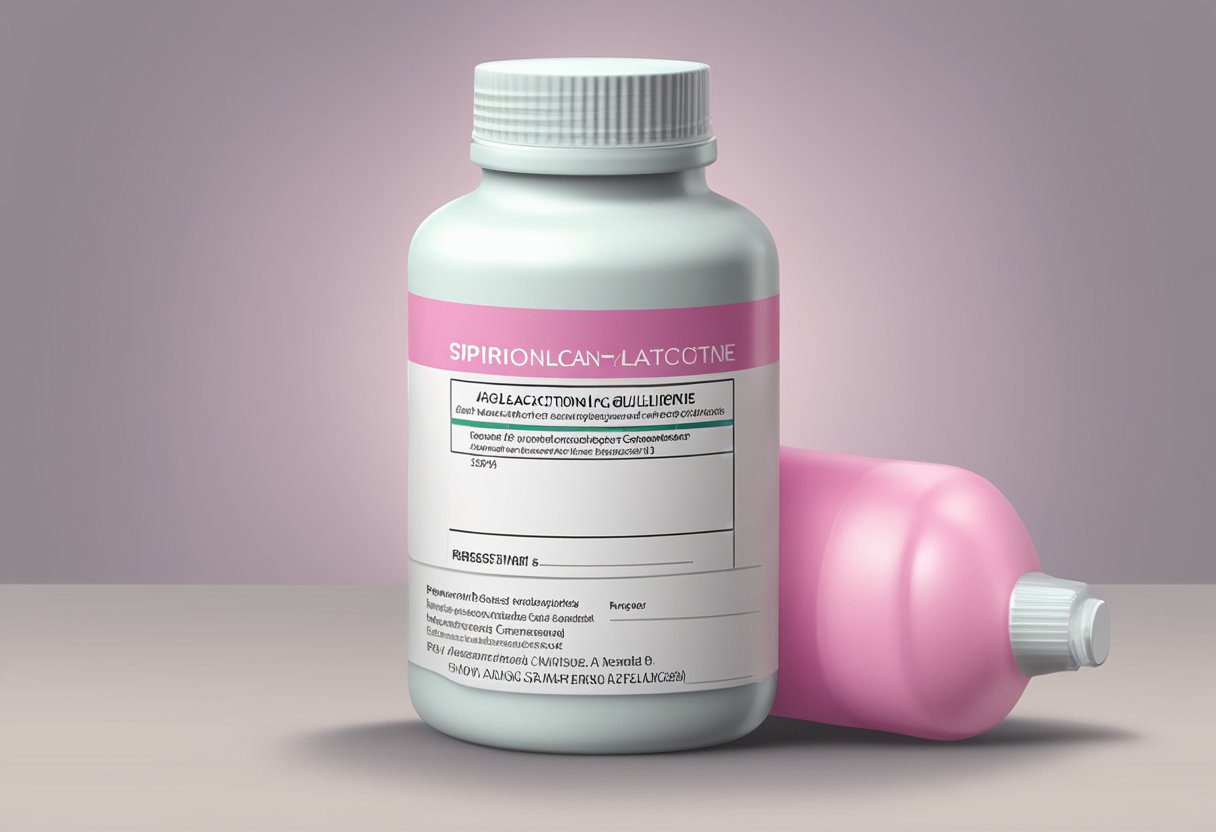Spironolactone is a medication traditionally used to treat conditions such as heart failure, hypertension, and certain symptoms of hyperaldosteronism. However, its influence on hormone levels has made it a subject of interest in dermatology for the treatment of conditions like acne and hirsutism.
Due to its anti-androgenic properties, spironolactone has sparked discussions concerning its safety—specifically regarding the risk of hormone-sensitive cancers such as breast cancer.

Recent research has aimed to clarify this potential risk. A study in JAMA Dermatology found no significant association between spironolactone use and an increased risk of breast cancer, suggesting a level of safety in this aspect. Conversely, it indicated that spironolactone might be related to a decreased risk of prostate cancer, highlighting the complexity of its effects on different forms of cancer.
Key Takeaways
- Spironolactone is widely used for diseases related to heart, hyperaldosteronism, and dermatological conditions but has a noted anti-androgen effect.
- Current research shows no significant link between spironolactone use and an elevated risk of breast cancer.
- Investigations continue into the broader implications of spironolactone on different types of cancers, noting the importance of individual patient considerations.
Pharmacology of Spironolactone

Spironolactone is a medication with multiple mechanisms of action, primarily affecting hormonal pathways and renal functions. It is used in various conditions, including hormonal disorders, heart failure, and certain types of hypertension.
Androgen Inhibition and Spironolactone
Spironolactone acts as an androgen receptor antagonist, which means it competes with androgens such as testosterone and dihydrotestosterone at receptor sites. By inhibiting the action of androgens, it can reduce the effects of these hormones in conditions like acne, hirsutism, and pattern hair loss.
Estrogen Interaction
Although not an estrogen compound, spironolactone can exhibit indirect estrogen-like effects. This can lead to gynecomastia in men. It is thought to displace estradiol from sex hormone-binding globulin (SHBG), potentially increasing free estrogen levels.
Spironolactone as a Potassium-Sparing Diuretic
Spironolactone is classified as a potassium-sparing diuretic, meaning that it helps the body get rid of excess water without losing potassium. This is beneficial in patients prone to hypokalemia or low blood potassium levels.
Mineralocorticoid Receptor Antagonism
This medication inhibits the mineralocorticoid receptor, primarily blocking aldosterone, a hormone that regulates blood pressure and fluid balance. By acting as an antagonist, spironolactone reduces the reabsorption of sodium and water, which can alleviate the symptoms of fluid overload in conditions such as congestive heart failure.
Indications and Off-Label Uses

Spironolactone has been broadly recognized for its efficacy in treating several conditions, often extending beyond its primary approved uses. Its role in cardiovascular and dermatological therapies underscores this versatility.
Heart Failure and Hypertension
Spironolactone, classified as a potassium-sparing diuretic, is FDA-approved for managing heart failure and hypertension. These conditions benefit from the medication’s ability to reduce fluid retention and counteract the effects of aldosterone, which can contribute to elevated blood pressure.
Acne, Hirsutism, and Alopecia
While not formally approved for dermatological applications, spironolactone is frequently used off-label to treat hormone-related skin conditions. It has notable efficacy in mitigating acne and hirsutism.
Additionally, androgenetic alopecia — a form of hair loss — is often managed with spironolactone due to its ability to inhibit androgens, which can degrade hair follicles.
Other Off-Label Conditions
Beyond the usual off-label applications, spironolactone is also used to treat hidradenitis and other forms of alopecia that are influenced by hormonal factors.
Its anti-androgenic properties make it a versatile tool for addressing a range of conditions not exclusively related to its diuretic function.
Spironolactone’s off-label use often coincides with a careful assessment of risks and benefits. Although studies suggest[1] no significant association between spironolactone use and breast cancer risk, prudence is advised, as with all pharmacological interventions.
Spironolactone and Cancer Risk

Spironolactone, a medication typically used to treat fluid retention and high blood pressure, has been the subject of research to determine its association with cancer risk. This section explores the relationship between spironolactone usage and the incidence of breast cancer, prostate cancer, and other gynecologic cancers, drawing insights from observational studies and meta-analyses.
Breast Cancer Incidence
Studies on spironolactone usage and its association with breast cancer risk have provided mixed results. Some research suggests there is no significant link between spironolactone and an increased risk of breast cancer.
For instance, an analysis of women who used spironolactone for acne treatment found no heightened breast cancer incidence after an 8-year follow-up period. These findings are critical for healthcare professionals when prescribing spironolactone and for patients concerned about the drug’s long-term effects.
Prostate and Other Gynecologic Cancers
Beyond breast cancer, evidence on spironolactone’s effects on other types of cancer is also noteworthy. A study revealed a potential decreased risk of prostate cancer in patients using spironolactone, highlighting the importance of understanding the different impacts the drug may have based on cancer type.
As for gynecologic cancers, such as ovarian cancer, data is limited and often tied to the broader category of hormonal influences linked to medications with anti-androgenic properties.
Observational Studies and Meta-Analyses
To derive more robust conclusions, observational studies and meta-analyses have been conducted to accumulate data across various individual studies.
These comprehensive reviews help in clarifying the scale and nature of cancer risk associated with spironolactone use.
For example, one meta-analysis found no statistically significant association between spironolactone and an increased risk of breast cancer, underscoring the potential safety of the drug in relation to cancer development. Similarly, it is essential for future research to integrate findings from multiple studies to reduce uncertainties and improve the evidence base for clinical decision-making.
Clinical Evidence and Research

Growing interest in the safety profile of spironolactone, particularly its association with breast cancer, has led to a number of studies and analyses. These efforts aim to provide healthcare professionals with clearer guidance regarding the medication’s use.
Randomized Controlled Trials
Randomized controlled trials (RCTs) form the backbone of clinical research by minimizing bias and providing high-quality evidence.
Investigations into spironolactone, such as one study published on the PubMed database, have not demonstrated a significant increase in breast cancer risk among users.
In this study involving 975 women with breast cancer compared to 1,007 on a placebo, the incidence of breast cancer did not show any noticeable increase.
Systematic Reviews and Meta-Analyses
Meta-analyses and systematic reviews compile data from multiple studies to strengthen the understanding of research topics.
With relevance to spironolactone’s impact on breast cancer risk, there are analyses that suggest a potential reduction in the occurrence of prostate cancer. This implies its complex interaction with hormonal pathways might also influence breast cancer mechanisms.
However, the certainty of evidence varies, with some studies, including those indexed in Embase and Web of Science, indicating very low certainty. They are often downgraded due to indirectness of evidence and heterogeneity among study results.
Safety Profile and Side Effects

In considering the medication spironolactone, it’s critical to be aware of its safety profile and side effects. While it has been deemed generally safe for various conditions, potential side effects relating to potassium balance, endocrine changes, and long-term cancer risks should be monitored.
Potassium Levels and Diuretic Effects
Spironolactone is a potassium-sparing diuretic, which means it helps the body expel fluids without causing the loss of potassium. It’s used to treat edema and other conditions caused by fluid retention.
However, because of its potassium-sparing nature, there’s a risk of hyperkalemia, especially if patients have impaired kidney function or are taking other medications that increase potassium levels.
Endocrine Effects and Menstrual Changes
The drug also exhibits anti-androgen effects, which can lead to menstrual irregularities, breast tenderness, and breast enlargement. These side effects are a result of spironolactone’s endocrine activity, as it obstructs both androgen and progesterone receptors to a degree.
Long-Term Safety and Tumorigenicity
Regarding tumorigenicity, studies suggest spironolactone does not significantly increase the risk of breast cancer.
Large-scale reviews have shown no consistent evidence of an increased risk of female breast cancer in patients using spironolactone. Despite the estrogenic effects of spironolactone and theoretical concerns for breast cancer survivors, current evidence supports its safety in long-term use.
Regulatory Status and Guidelines

Spironolactone is recognized by the US Food and Drug Administration (FDA) for its use in a number of medical conditions. The drug’s association with cancer risk has been extensively studied, leading to specific regulatory stances and guidelines.
FDA Approval and Regulations
The FDA formally approves spironolactone as a treatment for conditions such as heart failure, edema, hypertension, and primary hyperaldosteronism. Its ability to antagonize androgen and progesterone receptors has also led to off-label uses, notably in dermatology for acne management.
Initial animal studies had raised concerns about a potential link to cancer, but subsequent large-scale studies have not found an increased risk of breast cancer. This absence of a proven association ensures that spironolactone remains a versatile medication within FDA guidelines.
International Guidelines and Recommendations
Internationally, guidelines typically follow the research consensus presented by large retrospective cohort studies.
Entities like the European Medicines Agency (EMA) review and integrate data similar to the FDA, providing recommendations that spironolactone can be used without an elevated breast cancer risk.
Diverse international health bodies maintain that when used as indicated, or even off-label under professional guidance, spironolactone is safe from a carcinogenic standpoint.
Patient Considerations

When prescribing spironolactone for conditions like acne or hirsutism, healthcare providers take into account numerous patient-specific factors, including gender, age, and the presence of any comorbidities. These considerations are crucial in assessing the suitability and safety of spironolactone use in individual cases.
Gender and Age Factors
Women of reproductive age may be candidates for spironolactone to manage acne or hormonal disturbances.
Research has shown there is no statistically significant association between spironolactone use and risk of breast cancer[2] for this group.
Even in women older than 55, studies indicate that there is no evidence of increased incidence[3] of breast cancer associated with spironolactone.
However, age is an important consideration. For younger individuals with long potential treatment durations, ongoing monitoring may be advisable.
Although there is no direct evidence linking spironolactone with breast cancer in younger populations, vigilance is recommended due to the lack of long-term data.
Special Populations and Comorbidities
In diverse populations, including those with varying comorbid conditions, spironolactone’s safety profile remains consistent.
Patients with existing conditions such as renal impairment require careful dosage adjustments and monitoring due to spironolactone’s effects on electrolyte balance.
For individuals with a personal or family history of breast cancer, while current evidence suggests no increase in risk, it is crucial to weigh the benefits against any potential risks on a case-by-case basis.
Each patient’s history and health status guide the provider’s decision, ensuring that treatment with spironolactone is not only effective but also safe.
Alternate Therapies and Comparisons
In evaluating spironolactone’s role in breast cancer, it is important to consider its pharmacological profile compared to other medications and alternatives. These comparisons help contextualize its use and inform decisions on therapy.
Comparison with Other Diuretics
Spironolactone is a potassium-sparing diuretic often compared to other diuretics like furosemide and amiloride.
Unlike furosemide, a loop diuretic, spironolactone can be preferred in heart failure patients for its aldosterone-antagonist properties.
Amiloride, also potassium-sparing, lacks the anti-androgenic effects of spironolactone, making it less suitable for conditions like hirsutism or hormonal acne.
Hormone Replacement Therapy and Antiandrogens
In the context of breast cancer, Hormone Replacement Therapy (HRT) is used with caution due to the potential risk of hormone-sensitive cancer growth.
Spironolactone’s androgen receptor antagonism creates an overlap with certain antiandrogens, like finasteride, which is a 5α-reductase inhibitor.
However, finasteride primarily targets hair loss and does not possess the antihypertensive qualities of spironolactone.
Eplerenone is a similar antihypertensive medication to spironolactone but with fewer antiandrogenic effects.
Herbal and Natural Alternatives
Individuals seeking non-pharmaceutical options may explore herbal and natural alternatives.
However, efficacy and safety profiles vary widely, and adequate scientific backing is often lacking.
It’s crucial for these alternatives to be discussed with a healthcare provider before starting, especially in the context of cancer therapy.
Frequently Asked Questions
This section addresses concerns about spironolactone, a medication used in various dermatological and cardiovascular conditions, in relation to breast cancer.
Can spironolactone for acne treatment increase the risk of developing breast cancer?
Studies, such as one reported by the Journal of the American Academy of Dermatology[4], have followed women using spironolactone for acne and found no significant increase in the risk of breast cancer.
Is there a link between spironolactone usage and the occurrence of breast lumps?
No direct link has been established between spironolactone use and the formation of breast lumps.
Breast lumps can result from various factors and any concern about breast changes should be discussed with a healthcare provider.
Does spironolactone influence breast growth in a way that could contribute to cancer risk?
Spironolactone can bind to hormonal receptors and theoretically might influence breast tissue.
However, existing research, including studies published within the JAMA Network[2], does not confirm a correlation between spironolactone and enhanced breast cancer risk through breast growth modulation.
Are there specific concerns regarding spironolactone for patients with estrogen-positive breast cancer?
Patients with hormone-sensitive cancers, like estrogen-positive breast cancer, should use spironolactone cautiously.
A healthcare provider must be consulted, as spironolactone has the potential to interact with hormone receptors.
Has there been any research that suggests spironolactone may cause breast pain or related symptoms?
There is limited research specifically on spironolactone-induced breast pain.
However, an individual’s experience with medications can vary, and breast pain or discomfort should be evaluated by a medical professional.
What impact does spironolactone have on estrogen levels within the body?
Spironolactone predominantly affects androgen and progesterone receptors. It has less impact on estrogen receptors. A study reported by PubMed Central[5] found no significant increase in the risk of breast cancer in correlation with changes in estrogen levels due to spironolactone use in postmenopausal women.
References
- Just a moment.... https://www.jaad.org/article/S0190-9622(16)00415-1/fulltext Accessed October 27, 2025
- Just a moment.... https://jamanetwork.com/journals/jamadermatology/fullarticle/2788624 Accessed October 27, 2025
- Spironolactone and risk of incident breast cancer in women older than 55 years: retrospective, matched cohort study. https://www.bmj.com/content/345/bmj.e4447 Accessed October 27, 2025
- Just a moment.... https://www.jaad.org/article/S0190-9622(16)00415-1/pdf Accessed October 27, 2025
- Safety of 5α-reductase inhibitors and spironolactone in breast cancer patients receiving endocrine therapies. https://www.ncbi.nlm.nih.gov/pmc/articles/PMC6773272/ Accessed October 27, 2025
